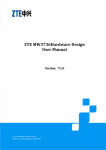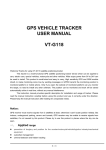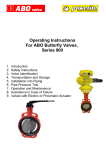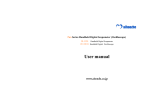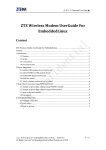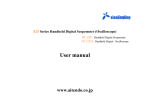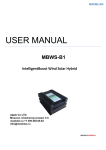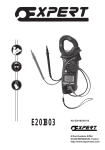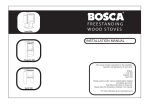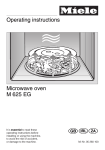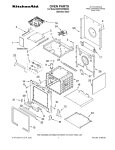Download USER MANUAL - Smart
Transcript
USER MANUAL LCWS-B Intelligent Buck & Boost Wind Solar Hybrid 20120314 VERSION 1 Safety Caution 1. Thank you for purchasing our controller. Before you install and use the product, please carefully read the User’s Manual and properly keep it. 2. The controller shall be installed by an experienced technician in strict accordance with the User’s Manual, to guarantee that it can work normally. 3. Keep the product free of contact with corrosive gas and humid environment for a long time. 4. Be sure not to place the product at a place where it is exposed to humidity, rain, sun, severe dust, vibration, corrosion, or strong electromagnetic interference. 5. Please don’t open the product’s casing to repair it by yourself. Table of Contents I. Product Overview ............................................................................................................... 1 II. Description of Model.......................................................................................................... 2 III. Installation Specification ................................................................................................... 3 IV. LCD Operation and Display Instructions ............................................................................. 5 4.1 Descrption of keys .................................................................................................... 5 4.2 Description of display content ................................................................................... 5 4.3 Day and night identification ...................................................................................... 7 4.4 Output mode ............................................................................................................ 7 4.5 Instructions for control panel .................................................................................... 8 V. Protection Mechanism ..................................................................................................... 14 VI. Performance Parameters ................................................................................................ 14 VII. Common Faults and Troubleshooting ............................................................................. 16 VIII. Warranty and After-sale Service .................................................................................... 16 Ⅰ Product Overview This controller is specially designed for high-end small wind-solar hybrid systems and applies to wind-solar hybrid street lighting systems and wind-solar hybrid monitoring systems. Its main functions are shown as below: 1) This controller, being a high-performance wind-solar hybrid controller, can control wind generators and solar cells to charge or discharge the storage batteries at the same time; when charging, it adopts high-resolution PWM mode to charge the storage batteries via voltage and current limiting, which can effectively prolong the storage batteries’ service life; 2) The controller is provided with an accurate rotating speed measuring and controlling module, so it can check the wind generator rotating speed in real time, and also can realize over-speed brake according to the set upper limit of safe rotating speed. 3) The controller is provided with two-channel DC output interfaces, and each channel has a maximum output current 10A; for each channel, the user can independently set three kinds of different output modes, namely, light-controlled on/off, light-controlled on/time-controlled off, and normally open. 4) The controller is provided with MPPT (maximum power point tracking) function. It, via advanced algorithm, can automatically search the maximum power point to realize the maximum conversion from wind energy to electrical energy. Through test, compared with traditional controllers, this controller can improve the charging efficiency by more than two times at maximum. 5) The controller is provided with a customized LCD, so the user can easily check and set the status of controller via the human-computer interaction interface: The items which can be checked: storage battery voltage, wind generator rotating speed, wind generator voltage, wind generator current, wind generator power, photocell voltage, photocell current, photocell power, the first channel output mode, the first channel output turn-off time, the second channel output mode, the second channel output turn-off time, light-controlled on voltage point, light-controlled off voltage point, daytime or nighttime indicator, storage battery status, load status, as well as the status of faults like over-voltage, under-voltage, over-load, and short-circuit. The items which can be set: the first channel output mode, the first channel output turn-off time, the second channel output mode, the second channel output turn-off time, light-controlled on voltage point, and light-controlled off voltage point. 6) The controller is provided with a unique solar charging circuit, with a small loss and heat, which is of open-circuit unloading mode, so as to effectively prolong the solar cell’s service life. 第1页 Page 1 7) Complete safety protection functions, including: solar cell reverse charging prevention protection solar cell reverse connection prevention protection solar cell current-limiting protection storage battery over-charging, over-discharging protection storage battery open-circuit protection storage battery reverse connection prevention protection overload, short-circuit protection lightning protection wind generator current-limiting protection wind generator over-speed protection automatic and manual brake protection of wind generator controller temperature monitoring, over-heat protection load over-voltage protection ※ Note: Except for storage battery reverse connection prevention protection, other protections above won’t damage the components. 8) The controller casing made of high-quality aluminum alloy is well designed, and has an attractive appearance and a good heat dissipation performance. 9) The controller is manufactured with strict production process and high-quality industrial components, so it can run reliably for a long time under cold, high-temperature, or humid environment. 第2页 Page 2 Ⅱ Description of Model LCW S-B1,B2 Internal code Solar energy Wind energy ※ Note: Refer to VI Performance Parameters for detailed information Ⅲ Installation Specification Output terminal connection diagram of LCWS-Bx wind-solar hybrid controller with double-channel standard configuration Output terminal connection diagram of LCWS-Bx wind-solar hybrid controller with single-channel dimming signal (optional) 第3页 Page 3 Connection diagram of LCWS-B wind-solar hybrid controller with communication port RS 485 (optional) Dimmer port and communication port RS485 are optional, so the customer shall clearly specify what you need; otherwise we will deliver the one in standard configuration. After the parts of wind-solar hybrid generator system and photovoltaic panel are installed and external circuit construction is completed, it is required to connect and operate the system parts safely and reliably according to the following sequence. 1) Open the package to confirm that the equipment is not damaged in transportation. 2) Connect the DC load to DC OUTPUT terminal. The loads of two channels share the same anode. Connect the first-channel load to “+”and“-1” of DC OUTPUT, and the second-channel load to “+”and“-2”of DC OUTPUT. 3) Connect the storage battery to the BATTERY terminal of back panel of equipment with the cable with copper conductor of 6mm2 and above. A reverse connection between anode and cathode of the storage batteries is forbidden, in order to avoid damaging components. 4) When wind generator is under static or low-speed running status (no wind), connect the wind generator output line to the WIND INPUT terminal of back panel of equipment. 5) Shield and then connect the solar cell panel to the SOLAR INPUT terminal of back panel of equipment according to anode and cathode. 第4页 Page 4 6) Set corresponding parameters to select the load output mode via the keys on the controller’s LCD. IV. LCD Operation and Display Instructions Diagram of panel keys 4.1 Description of keys Symbol Function description Add or display the next value: if under browsing status, press it to switch to next parameter display; if under setting status, press it to add the current parameter value modified. Reduce or display the previous value: if under browsing status, press it to switch to previous parameter display; if under setting status, press it to reduce the current parameter value modified. Setting/confirmation: if under browsing status, press it to enter the setting status; if under setting status, press it to store the parameters and return to the browsing status. Cancellation/manual switch: if under setting status, press it to return to the browsing status but not to store the values modified; if under browsing status, use it as a manual setting key in case of load short-circuit or over-load. 4.2 Description of display content 第5页 Page 5 Serial No. Symbol Notes Description A Indicating wind generator B A symbol of sun, indicating daytime A symbol of moon, indicating nighttime C When the battery is fully charged, 5 bars inside will all display ; when the over-discharged, the symbol storage battery is will flicker and then stop flickering upon recovery from over-discharging status; when battery storage is under over-voltage status, a battery status indicator bar will appear, and A symbol of storage battery, with the bars inside indicating the over-voltage symbol will flicker and then stop flickering upon recovery from over-voltage status. the battery charge status Under a normal load, indicator lamp will appear when without output, while indicator lamp will appear when with output; under over-load status, load symbol flicker, at this time, you need to eliminate the excessive load, and then press Esc key to D Load status and fault status recover the output; under short-circuit protection , short-circuit symbol will be on, at this time, you should check the load line and then press Esc key after confirmation for normality to manually recover it to original status. E (See Figure 4.2) An icon of manual brake: when it is on, it indicates “under manual brake status”, otherwise “status of manual brake unlocked”. F G (See Figure An icon of the item browsed 4.2) currently (See Figure Unit icons 4.2) A: current, unit: A; V: voltage, unit: V; W: power, unit: W; H: hour; 第6页 Page 6 M: minute. H (See Figure Digital display zone 4.2) I SET Indicating “under setting status” A symbol of light & time control is a symbol of light & time control. When appears, it indicates light-controlled on/off; and when appears, it indicates light-controlled on / J time-controlled off. K (See Figure Output on/off status 4.2) L (See Figure 4.2) Two–channel load output Channels 1 and 2 interface 4.3 Day and night identification It is night if the photocell voltage exceeds the light-controlled on voltage (can be set by users) for continuous 1min. It is day if the photocell voltage exceeds the light-controlled off voltage (can be set by users) for continuous 1min. 4.4 Output mode Output mode Normally open output mode Specification The voltage of battery is normal and within the rated load. The controller outputs will full power normally. Light-controlled on/time-controlled off output After dark (see 4.3 Day and night identification), it outputs according to mode the set load upper limit and the output off time is subject to the set time. Light-controlled on/off output mode After dark (see 4.3 Day and night identification), it outputs according to the set load upper limit and the output is off after the dawn). 第7页 Page 7 4.5 Instructions for control panel 4.5.1 Start-up interface In the start-up interface, 0.00V shows the current voltage of storage battery. Press key to enter into wind generator parameter state, and the current rotate speed, voltage, current and power of wind can be viewed: 4.5.2 Wind generator operating parameter state: 4.5.2.1 View the current rotate speed of wind generator 0.00M in the picture shows the current actual rotate speed of wind generator. Press to enter into next parameter state, and the current voltage of wind generator can be viewed. 4.5.2.2 View the current voltage of wind generator 0.00V in the picture shows the current voltage of wind generator. Press of wind generator can be viewed. 4.5.2.3 View the current of wind generator 第8页 Page 8 to enter into next parameter state, and the current 0.00A in the picture shows the current of wind generator. Press to enter into next parameter state, and the current power of wind generator can be viewed. 4.5.2.4 View the power of wind generator 0.00W in the picture shows the current power of wind generator. Press solar PV parameter state, and the current voltage, current and power of solar PV can be viewed. 4.5.3 Operating parameter state of solar PV module 4.5.3.1 View the voltage of solar PV 0.00V in the picture shows the current voltage of solar PV. Press solar PV can be viewed. 4.5.3.2 View the current of solar PV 第9页 Page 9 to enter into the next parameter state, and the current of 0.00A in the picture shows the current voltage of solar PV. Press to enter into the next parameter state, and the current power of solar PV can be viewed. 4.5.3.3 View the power of solar PV 0.00W in the picture shows the current voltage of solar PV. Press to enter into D load parameter status, and the current of DC load can be viewed. 4.5.4 Operating parameter state of load 4.5.4.1 View the current of DC load So far, the operating parameters of various parts of the system have been all viewed (if you need to look back certain parameter, press to display parameters counter-cyclically); In this interface as shown in Fig. 4.5.4.1, press mode setting of Channel 1 and 2 DC load. 第 10 页 Page 10 to enter into output 4.5.5 DC load output mode setting interface In this Manual, Channel 1 load is used as an example and its setting process is stated. 4.5.5.1 Normally open mode interface In this interface as shown in Fig. 4.5.5.1, press channel, press and the Channel 1 or 2 load setting interface can be switched over. For each "set/confirm" key first and the screen will display a “SET” sign, and then press or Channel 1 load can be switched over among the three output modes: normally open, light-controlled on/off, light-controlled on/time-controlled off. Users only need to select the mode they need, and then press key to save and quit. 4.5.5.2 Output mode interface of light-controlled on/off 第 11 页 Page 11 to confirm and press ESC 4.5.5.3 Output mode interface of light-controlled on/time-controlled off The output mode setting of Channel 2 is the same and its interface is as follows: 4.5.5.4 Output mode setting interface of Channel 2 load 4.5.6 Manual brake operation To ensure the operation safety of wind generator and for the convenience of users, this controller is so designed that the wind generator can be braked manually under any state. The specific process: keep then press ESC key “confirm” key on the panel pressed first, and and hold for about 5min. Loosen the key to enter manual braking state, and there will be “Brake” displayed at the top right corner of the display interface. If you want to quit manual braking state, repeat the above operation, namely, keep “confirm” key on the panel pressed first, and then press ESC key and hold for about 5min. Loosen the key to quit manual braking state. “Brake” at the top right corner of the display interface will disappear. The specific interface is shown as follows: 1) Manual braking interface (“Brake” appears at the top right corner of the display interface) 第 12 页 Page 12 "Brake” appears, and the wind generator brakes 2) Quit manual braking (“Brake” at the top right corner of the display interface): After wind generator brakes, it will stop rotating or rotate at a very slow speed. The wind generator is unable to generate electricity. "Brake” disappears, and the wind generator quits braking state. 第 13 页 Page 13 V. Protection Mechanism 1 Serial Protection No. contents General over-speed brake or brake off 2 Protection description Remarks If the rotate speed of wind generator exceeds the preset rotate speed of braking, it will automatically brakes through three-phase short circuit and the brake is off automatically after 3min. The controller has automatic braking function Over-speed brake If there are more than successive 3 overspeed brakes within 30min, or brake off under it will be determined as continuous strong wind and the brake can continuous strong be off automatically only after 4h. wind 3 Exceeding safe temperature When it exceeds the safe temperature because of overhigh ambient The controller temperature or overhigh temperature caused by heavy current, the has a built-in system will enable over-temperate protection automatically, disable temperature wind generator and photocell input, but the output will not be testing module affected. 4 Temperature Over-temperature protection is freed, and the system recovers to decreases to safe normal state. temperature This controller has good heat dissipation measures and the over-temperature protection module will not be enabled under non-extreme cases. 第 14 页 Page 14 VI Performance Parameters Model Sys tem vol tage LCWS-B 12V 24V Turbi ne i nput vol tage ra nge 0 ~ 100V 0 ~ 25A(15A) Turbi ne i nput current ra nge (i ni tia l va l ue) Turbi ne ma xi mum i nput power PV Input vol tage ra nge PV Input current ra nge (i ni tia l va l ue) PV Ma xi mum i nput power PV MPP Number of output ci rcui ts Output control mode 600W 1000W 0 ~ 25V 0 ~ 50V 0 ~ 100V 0 ~ 30A(15A) 0 ~ 30A(10A) 0 ~ 22A(8A) 500W 1000W 1500W 17 ~ 20V 34 ~ 40V 68 ~ 80V 2-cha nnel or 1-cha nnel wi th di mmi ng s i gna l Al wa ys open;l i ght-control l ed; l i ght on/time off 10A a bout0.4W a bout0.8W util i ty power i nterfa ce Optiona l Communi ca tion i nterfa ce RS232 / RS485(optiona l ) -20 ~ +50℃ Opera ting tempera ture ra nge Opera ting humi di ty ra nge 0 ~ 20A(15A) 350W Ma xi mum output current Static power 48V 35% ~ 85% (no condens a tion) Product s i ze 190.5*150*85.5mm Pa cka ge s i ze 233*182*130mm wei ght 2.2Kg 第 15 页 Page 15 a bout1.0W VII. Common Faults and Troubleshooting If the above statements are not satisfied, or there is any abnormal phenomenon and the controller cannot return to normal, please contact the after-sale service or business personnel of our company for maintenance or replacement in a timely manner. Phenomenon Storage battery box Specification flickers and there is no output It is over discharged. The storage battery is emptied. Please fully charge the storage battery before use. The system detected output overlead and will disable the overloaded output Load icon flickers and there is no output loop (the other loop will not be affected). Please check the loads, and remove the unnecessary or abnormal loads. Press Esc to recover. The system detected output short circuit and will disable the short circuited is on and there is no output output loop (the other loop will not be affected). Please check the loads and connection lines. After troubleshooting, press Esc to recover. The temperature of the controller is too high and the over-temperature The output is normal but it is not protection (the wind generator brakes, the photocell has open circuit, but the charged. output will not be affected). When the temperature decreases to recovery temperature, the system will recover. VIII. Warranty and After-sale Service 1. The product quality warranty of our company is one year, or in case of any defect or fault found within the quality warranty year as agreed in the contract, our company will provide free maintenance service. Place contact the after-sale department or related business personnel of our company. 2. The warranty range in this quality warranty clause is exclusive of damages caused by external factors, such as damages caused by force majeure, e.g. accident and natural calamities, use not in accordance with the product specification, improper use, negligence, refit, repair, improper installation, improper testing, improper transportation, etc. 第 16 页 Page 16




















